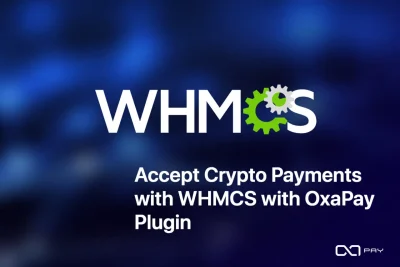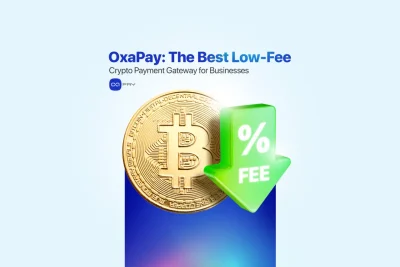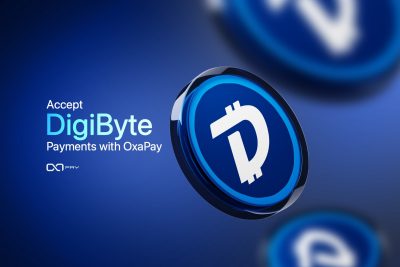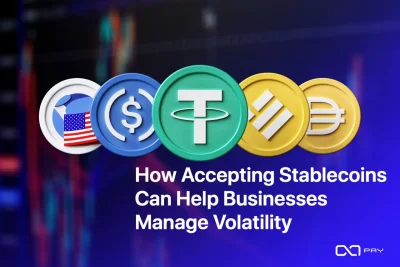What makes a crypto payment gateway truly suitable for ecommerce? It’s not just about accepting Bitcoin or USDT, it’s about seamless checkout, real-time settlements, and full control over the user experience. As global online businesses grow, many are turning to crypto for faster payments and fewer restrictions. In this article, we analyze the best crypto payment gateways for ecommerce, using 17 in-depth criteria to help you find the right fit for your store.
How We Evaluated Crypto Payment Gateways
Choosing the right crypto payment gateway goes beyond transaction processing, it’s about building trust with customers, reducing checkout friction, and ensuring seamless integration into an existing ecommerce setup. To determine which solutions truly excel, we evaluated five leading crypto payment gateways against seventeen well-defined ecommerce-specific criteria. These evaluations were carried out using official documentation, hands-on testing in sandbox environments, direct merchant feedback, API behavior analysis, and live customer support interactions. Each criterion was scored on a 1-to-5 scale, ensuring a consistent and transparent comparison based on real-world performance.
Top Crypto Payment Gateway for Ecommerce
In this section, we compare the leading crypto payment gateways for ecommerce, examining each of the seventeen criteria in detail to show how every provider performs in real-world conditions.
1. Seamless Checkout Experience
A smooth and uninterrupted payment process improves conversion rates. Gateways should avoid redirects, provide responsive checkout pages for mobile and desktop, and support multiple languages to accommodate international customers.
OxaPay(Score: 4/5)
OxaPay offers a fully branded, no-redirect experience through its White Label service. Payments are processed directly on the merchant’s website using embedded widgets or APIs, allowing for a fluid checkout without exposing the OxaPay brand. For standard modes (like Payment Link or basic plugin setup), users are redirected to an OxaPay-hosted payment page that is mobile-optimized and multilingual.
Coinbase Commerce(Score: 4/5)
Coinbase Commerce typically redirects customers to a hosted payment page (e.g., payment.coinbase.com) displaying Coinbase branding. This approach means the checkout is not fully embedded and lacks a seamless, branded experience for the merchant’s own site. However, the interface is responsive and optimized for mobile, tablet, and desktop users. Multilingual support is limited but adequate for major markets such as the U.S.
BitPay(Score: 4/5)
BitPay redirects customers to a hosted payment page on bitpay.com that features BitPay branding, meaning the checkout process is not embedded or fully white-labeled. However, the UI is responsive and mobile-friendly, making it usable across devices, including in-store POS systems. The platform supports 40+ languages, making it highly accessible for global users.
NOWPayments(Score: 4/5)
NOWPayments offers both redirect and no-redirect options depending on the integration method. With plugins like WooCommerce or Shopify, payments can occur directly on the merchant’s site, while Payment Links and Invoices redirect users to NOWPayments-hosted pages. The checkout interface is mobile-friendly, minimalistic, and supports multiple languages, enabling smooth global user experiences.
CoinGate(Score: 4/5)
CoinGate typically uses hosted payment pages, meaning customers are redirected to a CoinGate-branded checkout. While some plugins like WooCommerce and certain API integrations allow for a semi-integrated experience, full no-redirect checkout is not supported. The UI is responsive, mobile-friendly, and localized for global users in over 100 countries.
2. Multi-Currency Support
Your gateway should accept a wide range of popular cryptocurrencies such as USDT, BTC, ETH, TRX, BNB, LTC, and SOL. It should also allow pricing to be based on fiat currencies (e.g., USD) while accepting crypto at the time of checkout.
OxaPay(Score: 4/5)
OxaPay supports 20+ popular cryptocurrencies including BTC, ETH, USDT (TRC20, ERC20, BEP20), USDC, BNB, TON, TRX, LTC, and SOL. Merchants can set prices in fiat (e.g., USD), and OxaPay will auto-convert at real-time rates to reduce volatility risk.
Coinbase Commerce(Score: 5/5)
The platform supports a limited set of cryptocurrencies including BTC, ETH, LTC, BCH, USDC, DOGE, and DAI. While this covers many popular assets, it falls short compared to gateways offering 20+ coin options. Coinbase does support automatic conversion to USD or USDC, which helps reduce volatility risks, but conversion options are restricted to these two.
BitPay(Score: 5/5)
BitPay supports a range of coins including BTC, ETH, BCH, LTC, DOGE, UNI, BNB, and stablecoins like USDC. It offers automatic conversion to eight fiat currencies (e.g., USD, EUR) or stablecoins, helping merchants reduce price volatility risks.
NOWPayments(Score: 5/5)
One of the platform’s standout features is its support for over 300 cryptocurrencies, the widest among major gateways. It also offers automatic conversion to stablecoins or fiat using a tool called Volatility Shield, helping merchants hedge against crypto price fluctuations.
CoinGate(Score: 5/5)
CoinGate supports over 70 cryptocurrencies, including BTC, ETH, LTC, SOL, XRP, and BCH. Through ShapeShift integration, users can pay with alternative coins that are auto-converted. Merchants can receive payouts in EUR, USD, or stablecoins to mitigate volatility.
3. Fast & Secure Settlements
Real-time confirmation of payments, automated settlement to merchant wallets, and the ability to schedule withdrawals are vital to ensure liquidity and operational efficiency.
OxaPay(Score: 4/5)
Transactions are confirmed instantly with a 99.9% uptime processing engine. Merchants can withdraw directly to wallets or exchanges, with auto-withdrawal scheduling (daily, weekly, monthly) for operational flexibility.
Coinbase Commerce(Score: 5/5)
Coinbase Commerce offers instant payment confirmation and direct settlement to wallets or bank accounts. However, it lacks features like scheduled or automated withdrawals, which can be useful for recurring operations or treasury management.
BitPay(Score: 5/5)
Payments are confirmed instantly, with settlements sent to bank accounts or wallets. Scheduled withdrawals are supported, but merchants may face additional verification fees to enable certain features.
NOWPayments(Score: 5/5)
Payments are confirmed instantly, and merchants can schedule daily, weekly, or monthly withdrawals to wallets or linked accounts. NOWPayments supports non-custodial withdrawals, ensuring better control and security for merchants.
CoinGate(Score: 5/5)
Payments are confirmed instantly, and merchants can schedule daily, weekly, or monthly withdrawals to wallets or linked accounts. NOWPayments supports non-custodial withdrawals, ensuring better control and security for merchants.
4. Integration with Ecommerce Platforms
Native plugins for platforms like WooCommerce, Shopify, Magento, WHMCS, and others simplify integration. Developers should also have access to full API documentation and sandbox environments for testing.
OxaPay(Score: 5/5)
Official plugins are available for WooCommerce, WHMCS, PrestaShop, and others. OxaPay also provides no-code tools (Payment Links, Crypto Invoices) and a complete developer API with documentation for custom integration.
Coinbase Commerce(Score: 4/5)
Official plugins exist for WooCommerce and some others like Primer. While APIs are available, their flexibility for non-standard or headless platforms is somewhat limited. Payment buttons and basic API integration are available for cart or invoice connections.
BitPay(Score: 5/5)
BitPay provides official plugins for major platforms like WooCommerce, Magento, PrestaShop, and also offers POS solutions for physical stores. Its API is well-documented and offers ready-made libraries for PHP, Python, and more, allowing easy integration into carts and invoicing systems.
NOWPayments(Score: 4/5)
NOWPayments provides official plugins for WooCommerce, Magento, OpenCart, WHMCS, and more. It supports no-code tools such as payment buttons and links, and offers Mass Payout capabilities for batch transactions. The API is well-documented and straightforward to integrate with shopping carts and invoicing systems.
CoinGate(Score: 5/5)
Official plugins are available for WooCommerce, PrestaShop, Magento, Wix, and WHMCS, with sandbox support for testing. CoinGate also offers payment buttons, a detailed API, and integration options with carts and billing systems.
5. Refund and Credit Handling
Mistakes happen, whether due to order cancellations or customer issues. A reliable refund mechanism, with clear transaction logs and return processing, is a must for customer satisfaction.
OxaPay(Score: 4/5)
Refunds can be issued directly through the dashboard. While crypto refunds depend on blockchain mechanics, OxaPay supports credit logic and refund workflows with full tracking.
Coinbase Commerce(Score: 4/5)
Refunds are supported, but the process is less intuitive than in platforms like OxaPay. Dispute resolution and refund workflows are not as merchant-friendly, especially for small teams without technical support.
BitPay(Score: 4/5)
Refunds are supported through the merchant dashboard, though the process can be somewhat complex for less technical users. The system allows for managing refund transactions within the platform.
NOWPayments(Score: 4/5)
Merchants can initiate refunds and manage related transactions directly from the dashboard. The system logs transaction details for easy tracking and status management.
CoinGate(Score: 3/5)
Merchants can initiate refunds from the dashboard, and a comprehensive transaction log aids in tracking. Refund fees (e.g., €0.25) may apply, but the process is transparent and user-controlled.
6. Security & Access Control
Features like IP allowlisting, two-factor authentication (2FA), and role-based access controls protect sensitive financial operations and prevent unauthorized access.
OxaPay(Score: 5/5)
Security features include 2FA, allowed IP configuration for payouts, activity monitoring, and alert systems for suspicious actions. Role-based access control is also available for teams.
Coinbase Commerce(Score: 5/5)
Leverages the robust infrastructure of Coinbase, including 2FA and strong security protocols. However, advanced merchant controls such as allowed IP lists or customizable security alerts are not offered.
BitPay(Score: 5/5)
BitPay implements strong security, including 2FA and anti-fraud protocols. It allows multi-user access, which is useful for team-based operations, though it lacks features like IP allowlisting. It has robust fraud prevention systems in place.
NOWPayments(Score: 5/5)
The platform is non-custodial, enhancing fund control for merchants. Security features include 2FA, SSL encryption, and real-time webhook notifications. However, there is no option to restrict access by IP address.
CoinGate(Score: 5/5)
CoinGate supports 2FA, encrypted communication, webhooks for real-time updates, and integrations with Bitcoin Lightning Network for faster, secure transactions. However, IP allowlisting is not available for added access control.
7. Compatibility with Multiple Payment Models
From one-time purchases to recurring subscriptions, your gateway should support a variety of models, QR code payments, invoices, links, or automated APIs.
OxaPay(Score: 5/5)
Supports a variety of models including one-time payments, subscriptions (via API or plugins), QR codes, and multi-product invoices. White Label enables customization of the entire payment experience.
Coinbase Commerce(Score: 3/5)
Supports payment links, invoices, and API-based checkouts, but lacks QR code support or advanced subscription/multi-stage payment options. Customization of the payment page is minimal, and Coinbase branding is always visible.
BitPay(Score: 4/5)
Supports various payment models including payment links, invoices, API-based checkouts, QR codes, and POS payments. However, customization of the checkout page is limited, and BitPay branding is always visible.
NOWPayments(Score: 5/5)
NOWPayments supports a wide range of payment flows including links, invoices, embedded widgets, API, QR codes, and subscription-based payments. It also features Donation Widgets and Mass Payouts, expanding use cases beyond standard e-commerce.
CoinGate(Score: 5/5)
The platform supports payment links, invoices, QR codes, POS tools, and API-based transactions. It also features a gift card marketplace and Bitcoin Lightning integration, accommodating a variety of payment scenarios.
8. Incomplete or Partial Payment Support
Crypto volatility and user error can lead to underpaid transactions. The gateway should notify both the customer and the merchant, and ideally offer tools for completing payments with the same or alternative coins.
OxaPay(Score: 5/5)
In case of underpaid transactions, users are notified and can complete the remaining amount. The platform also supports Mixed Payments, allowing users to pay the rest with another crypto if needed.
Coinbase Commerce(Score: 3/5)
While the platform does notify merchants of underpayments, it does not support mixed payments (e.g., BTC + USDT) or offer configurable thresholds for underpaid transactions.
BitPay(Score: 3/5)
BitPay notifies merchants of underpaid transactions, but does not support combined payments using multiple currencies (e.g., BTC + USDT). This may limit flexibility for certain customers.
NOWPayments(Score: 4/5)
The platform detects underpayments and provides alerts with options to complete the payment. It also supports split payments across multiple cryptocurrencies, offering flexibility for users paying with multiple wallets or assets.
CoinGate(Score: 4/5)
CoinGate notifies users of underpaid transactions and allows them to complete remaining amounts. It also supports multi-currency split payments, ensuring flexible payment handling.
9. Advanced Merchant Dashboard
A powerful dashboard provides access to transaction logs, filtering, analytics, and the ability to configure services like auto-conversion, preferred settlement coin, and more.
OxaPay(Score: 5/5)
A professional merchant dashboard provides transaction filtering, CSV export, real-time metrics, and advanced settings like auto-conversion, static addresses, and preferred currency selection.
Coinbase Commerce(Score: 3/5)
The dashboard offers basic reporting and CSV exports, but lacks advanced filters, analytics, or automation features such as auto-conversion or permanent receiving addresses. Useful for small operations but limiting for data-driven businesses.
BitPay(Score: 4/5)
Offers a clean, user-friendly dashboard with sales reports and CSV exports. However, it lacks advanced features like automated conversion rules or more granular settings for treasury management.
NOWPayments(Score: 5/5)
NOWPayments features a powerful dashboard with sales analytics, export tools, conversion settings, static wallet generation, and preferred currency configuration. Merchants can easily filter, sort, and manage transaction data.
CoinGate(Score: 4/5)
The merchant portal provides transaction tracking, conversion controls, and export tools. Users can manage accepted coins, set auto-conversion rules, and generate performance reports.
10. Compliance & Financial Freedom
The gateway should work globally without strict KYC requirements. This flexibility allows merchants in underserved or restricted regions to accept crypto payments without legal or banking friction.
OxaPay(Score: 5/5)
No KYC/KYB is required to start using OxaPay. It is accessible in most jurisdictions and allows merchants to receive payments from anywhere in the world without regulatory friction.
Coinbase Commerce(Score: 2/5)
Full access to Coinbase Commerce requires KYC verification, which may deter privacy-focused businesses. Geographic restrictions apply, especially in some non-U.S. jurisdictions, and accepting payments from certain countries may be limited.
BitPay(Score: 3/5)
BitPay requires KYC/KYB verification and charges a $150 application fee for some business accounts. It operates in 229 countries, though certain regions have restrictions. Compared to Coinbase, BitPay offers more flexibility for accepting payments from international customers.
NOWPayments(Score: 3/5)
NOWPayments is KYC-free by default, which makes it suitable for small and privacy-focused businesses. However, there may be regional limitations, particularly in the United States. Generally, it supports borderless transactions with minimal geographic restrictions.
CoinGate(Score: 3/5)
Merchants must select their country at signup, and some regions (e.g., parts of the US) may have restrictions. While KYC is not always required, it may apply based on jurisdiction. The service generally accepts payments globally.
11. Network Uptime & Reliability
Downtime during high-traffic hours can cost you real money. A well-architected system with proven uptime, fallback strategies, and blockchain congestion handling is essential.
OxaPay(Score: 5/5)
With 99.9% uptime and scalable microservice infrastructure, OxaPay handles high-traffic periods without delay. Intelligent load balancing and delayed payment management (e.g., underpaid tolerance up to 60%) ensure operational reliability.
Coinbase Commerce(Score: 5/5)
While Coinbase’s infrastructure is known for reliability, no specific uptime figures are publicly shared. The platform likely uses cloud-based redundancy and failover systems, but documentation lacks detail. Handling of delayed or congested blockchain transactions is minimal.
BitPay(Score: 5/5)
BitPay has a strong track record, processing 10+ million transactions since 2011. Although detailed infrastructure information isn’t public, its scale implies redundant, multi-server architecture. The platform identifies failed or delayed transactions, but auto-handling of delays is limited.
NOWPayments(Score: 5/5)
Though the provider does not publish detailed infrastructure data, NOWPayments has demonstrated high availability and reliable performance even during network congestion. Its ability to support 300+ coins implies a robust and scalable infrastructure.
CoinGate(Score: 5/5)
With over 2.5 million transactions processed, CoinGate has a solid track record of reliability. Its Lightning Network support reduces latency under network congestion. Although detailed server architecture is undisclosed, its operational history suggests a strong backend infrastructure.
12. Quality of Merchant Support
Responsive, helpful support, especially during payment disputes or technical issues, can save businesses time and revenue. Channels like live chat, ticketing, and a knowledge base add real value.
OxaPay(Score: 5/5)
24/7 support is provided via Telegram, email, and ticketing system. Feedback indicates fast and helpful responses, especially for small and mid-sized businesses. No phone support is offered.
Coinbase Commerce(Score: 3/5)
Support is provided via email and ticketing, but users have reported slower response times, particularly for complex issues. No live chat or real-time support channels are offered. Knowledge base documentation is available but may not be sufficient for urgent troubleshooting.
BitPay(Score: 4/5)
Provides 24/7 support via email, live chat, ticketing, and a comprehensive knowledge base. Merchants report generally good service, though complex issues may require more time to resolve.
NOWPayments(Score: 4/5)
Merchants receive 24/7 support via email, live chat, Telegram, and a detailed knowledge base. User feedback indicates fast and helpful responses, though complex technical issues may require more time.
CoinGate(Score: 4/5)
Support is available 24/7 via email, live chat, and ticketing, with generally positive user feedback. The knowledge base and direct support channels assist merchants with transaction disputes and technical queries.
13. White Labeling and Branding Options
Being able to present a branded checkout experience enhances professionalism and trust. Full white-label capabilities, or at least custom branding, are important for brand consistency.
OxaPay(Score: 5/5)
Merchants using White Label can fully customize the payment page with their own domain (e.g., pay.yourstore.com), logo, and color scheme. This strengthens brand identity and user trust.
Coinbase Commerce(Score: 1/5)
Coinbase Commerce does not offer white-label customization. Payment pages are hosted on Coinbase’s domain and visibly branded, with no support for custom domains or logos. Merchants looking for a fully branded experience will find this restrictive.
BitPay(Score: 1/5)
BitPay does not support full white-label customization. All payments are processed through its domain and display BitPay branding. Custom domains or white-labeled checkout flows are not available.
NOWPayments(Score: 3/5)
NOWPayments offers limited branding customization. While embedded widgets retain the look of the merchant’s site, payment links redirect to NOWPayments-branded pages. There is no full white-label support, and custom domains are generally not available.
CoinGate(Score: 2/5)
CoinGate does not offer full white-labeling. Hosted payment pages are CoinGate-branded, with only limited customization available. Payment links also rely on CoinGate domains, and use of custom domains is not broadly supported.
14. Transparent Fee Structure
Look for gateways that clearly outline all transaction, withdrawal, and conversion fees. Hidden charges or complicated pricing models can lead to unpleasant surprises.
OxaPay(Score: 5/5)
OxaPay charges a flat 0.4% per transaction, one of the lowest in the market. There are no hidden fees for withdrawals or conversions, though blockchain network fees may apply.
Coinbase Commerce(Score: 3/5)
The platform charges a flat 1% transaction fee. Additional charges may apply for currency conversions or fiat withdrawals, especially outside the U.S. Pricing is relatively clear, though not as low or flexible as competitors like OxaPay.
BitPay(Score: 3/5)
Uses a tiered fee model:
- 1% + $0.25 for > $1M
- 2% + $0.25 for monthly volume < $500K
- 1.5% + $0.25 for $500K–$1M
Additional fees may apply for fiat withdrawals or identity verification.
NOWPayments(Score: 5/5)
The pricing model is clear:
- 0.4% fee for crypto-to-crypto transactions
- Up to 0.5% additional for conversions (total up to 1%)
- No hidden fees are reported, but blockchain network fees may apply.
CoinGate(Score: 3/5)
The standard fee is 1% per transaction, with €0.25 for refunds and 0.1% for currency conversion. Fiat withdrawals may incur 0–1% additional fees. While the pricing structure is clear, the extra fees for fiat and conversions can introduce complexity.
15. Accounting & ERP Integration
Crypto payments must align with your accounting workflow. Exportable transaction records, compatibility with QuickBooks or ERP tools, and custom integrations help streamline finance ops.
OxaPay(Score: 2/5)
The dashboard allows CSV exports for financial reporting. While direct integration with ERP systems like QuickBooks isn’t built-in, the API allows developers to build such connections.
Coinbase Commerce(Score: 4/5)
Merchants can export transactions in CSV format, but no direct integration with ERP systems like QuickBooks is available. API access allows for custom development, but requires technical resources.
BitPay(Score: 5/5)
Merchants can export reports in CSV format for accounting. BitPay offers native integration with QuickBooks, a major advantage for businesses needing ERP compatibility. APIs are available for custom integration as well.
NOWPayments(Score: 3/5)
Merchants can export transactions as CSV files for accounting. While native QuickBooks or ERP integrations are not provided, the API can be used for custom integrations into back-office systems.
CoinGate(Score: 4/5)
Merchants can export transaction data in CSV format for accounting. While no direct QuickBooks or ERP plugins are provided, CoinGate’s API allows custom ERP integration.
16. Support for Headless Frontends and Custom UIs
Modern ecommerce setups often use custom frontends or SPA (Single Page Apps). A robust API with Webhooks and SDKs for different languages enables seamless integration with any frontend architecture.
OxaPay(Score: 5/5)
OxaPay’s robust API supports full headless commerce setups using frameworks like React, Vue, or SPA architectures. The documentation includes examples in PHP, Python, and others.
Coinbase Commerce(Score: 4/5)
The available API can be used for basic headless setups, but it is less robust and flexible than that of OxaPay or NOWPayments. Developer documentation is adequate but lacks extensive SDKs or advanced examples.
BitPay(Score: 5/5)
BitPay provides a powerful API suitable for headless commerce and custom frontend setups. It integrates with 22+ e-commerce platforms and has well-documented developer tools, including libraries for PHP, Python, and more.
NOWPayments(Score: 5/5)
NOWPayments is well-suited for headless or custom frontends, with SDKs available for JavaScript, PHP, Python, and other languages. Developers can access a full-featured sandbox environment for testing, along with comprehensive API docs and webhook event support.
CoinGate(Score: 5/5)
The API is well-documented and comes with SDKs for Node.js, Python, and PHP. This makes CoinGate suitable for headless frontends or custom store architectures. It also provides a sandbox environment and webhook documentation for full integration control.
17. Analytics & Checkout Behavior Tracking
The ability to monitor page views, drop-offs, conversion rates, and payment completion gives merchants insight into user behavior and areas for improvement.
OxaPay(Score: 2/5)
Real-time dashboards track transaction flow, abandoned checkouts, and conversion rates. Predictive analytics tools help merchants identify drop-off points and optimize the user journey.
Coinbase Commerce(Score: 2/5)
The dashboard supports basic transaction tracking, but lacks tools for abandoned payment analysis, conversion drop-off reporting, or advanced payment behavior insights. Merchants looking to optimize the checkout funnel may find this limiting.
BitPay(Score: 2/5)
BitPay’s dashboard includes basic reporting tools but lacks advanced behavioral analytics such as abandoned payment tracking or conversion drop-off analysis. Merchants needing insights into customer behavior will find it limited in this area.
NOWPayments(Score: 2/5)
The dashboard provides tools for tracking payments and user behavior, but does not offer advanced insights such as detailed abandonment tracking or conversion funnel analysis. Standard reporting is available, but behavioral analytics are basic.
CoinGate(Score: 2/5)
The merchant dashboard includes basic analytics for transaction history and volume. However, it does not offer advanced analytics like drop-off or abandonment tracking. Insights into conversion funnels are limited to basic metrics.
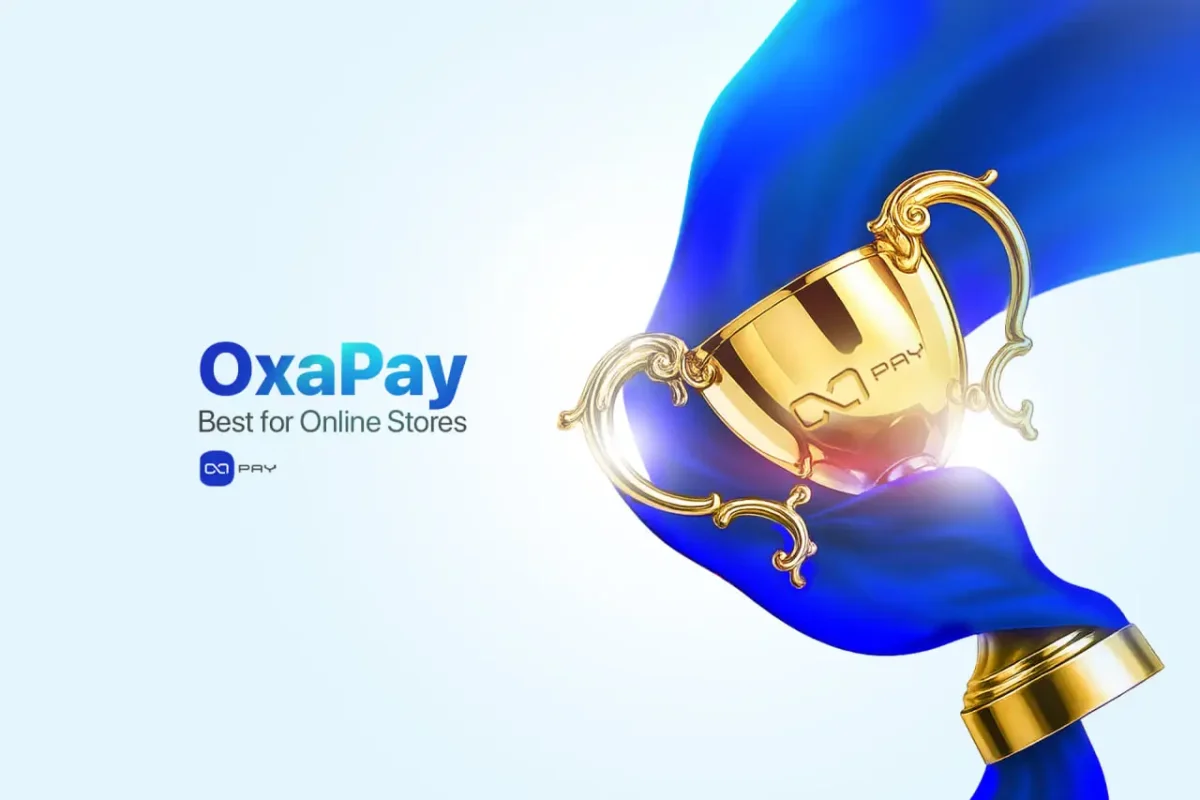
Which Is the Best Crypto Payment Gateway for Ecommerce?
We evaluated five leading crypto payment gateways based on 17 ecommerce-specific criteria. The following table summarizes their total scores out of 85:
| Payment Gateway | Total Score (out of 85) | Key Strengths |
|---|---|---|
| OxaPay | 76 | Strong balance of flexibility, real-time settlement, and branding control |
| NOWPayments | 73 | Excellent coin coverage and plugin variety; ideal for global and altcoin-focused shops |
| CoinGate | 68 | Reliable integrations and Lightning support, but limited branding customization |
| BitPay | 67 | Strong infrastructure and ERP support, though less adaptable for modern use cases |
| Coinbase Commerce | 59 | Simple setup and trusted brand, but lacks flexibility, coins, and customization |
Note: Each score is based on detailed analysis across 17 factors such as integration, settlement speed, refund handling, branding, analytics, and more. Full explanations are provided in the comparison sections above.
There’s no one-size-fits-all answer when it comes to choosing a crypto payment gateway for ecommerce. Established providers like Coinbase Commerce, NOWPayments, and CoinGate offer mature ecosystems with proven reliability, while newer platforms such as OxaPay have quickly gained traction by offering real-time settlements, robust plugin integration, and full control over the checkout experience.
Each solution brings its own advantages, whether it’s broader coin support, fast settlements, plugin availability, or advanced payout tools. Businesses should carefully assess their priorities, such as branding control, transaction fees, or international accessibility, and choose the gateway that aligns best with their ecommerce strategy.
OxaPay, despite being a younger player, stands out as a serious contender among the top choices for modern online stores.

The Role of Payment Systems in E-commerce Growth
Efficient payment systems do more than process transactions, they drive growth. A seamless and localized checkout boosts conversion. Instant settlements and fee transparency improve profit margins. White-label and API flexibility support custom user experiences and advanced business logic. For growing online stores, the choice of payment infrastructure is a strategic decision, not just a technical one.
Conclusion
Choosing the best crypto payment gateway for ecommerce requires more than comparing coin lists or fees, it demands evaluating real merchant needs. From seamless checkout to advanced integration, the gateways that prioritize performance, flexibility, and user trust will drive growth. OxaPay stands out by offering a full suite of ecommerce-ready tools with strong developer support. Take time to assess, test, and choose the gateway that matches your business model.
👉 Ready to start? Explore OxaPay’s features and try it in sandbox mode today.

